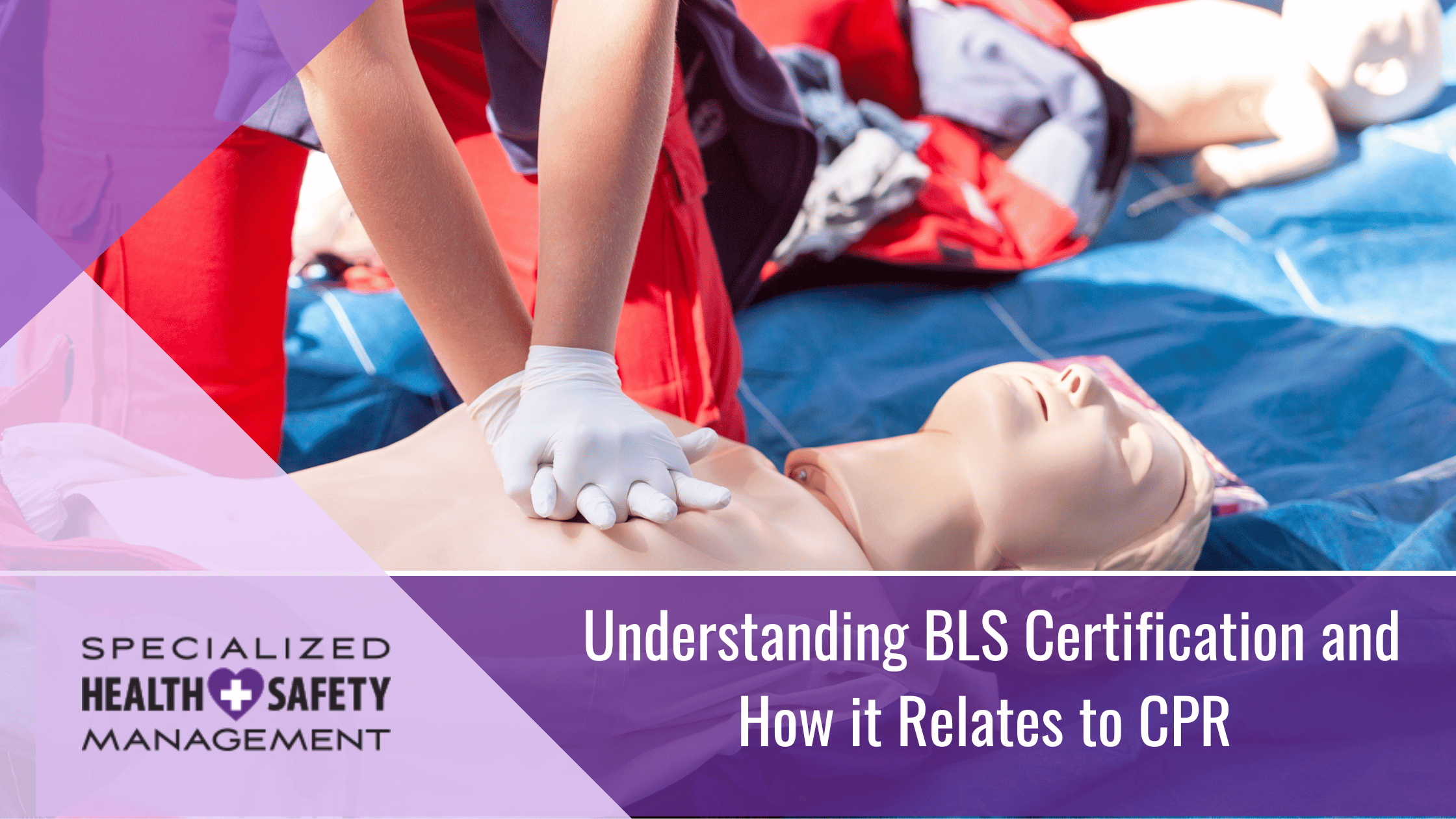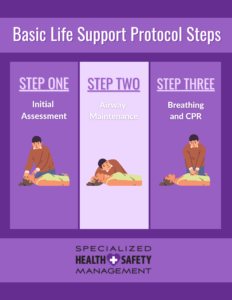
Receiving proper safety training is a critical first step toward preparing for an emergency situation. However, safety training comes in several different forms. Two of the most prominant forms of safety training are BLS certification and CPR training. While BLS and CPR are similar in the most basic ways, they differ in their level of depth and skills that they encompass, so it’s important to understand which type of training is best for you and your organization.
What is CPR?
Whether you’ve taken a CPR class or you’ve seen it on your favorite medical drama, you’ve probably heard of CPR before. CPR stands for “cardiopulmonary resuscitation” and usually involves performing chest compressions and blowing air into the mouth of an individual whose heart has stopped. Recently, new CPR techniques have been developed that utilize chest compressions only, but the rescue-breath method is still widely taught.
The goal of CPR is to manually beat the heart so oxygen can continue flowing through the body until medical professionals arrive and administer life-saving care. CPR training courses focus on CPR and only touch on more advanced techniques like two-person CPR and airway maintenance.
What is BLS Certification?
While CPR is widely-known, BLS may be an unfamiliar term. BLS stands for “basic life support” and is required for individuals in the medical field, including first responders, healthcare providers, paramedics, public safety professionals, and qualified bystanders. BLS has three important steps:
- Initial assessment
- Airway maintenance
- Breathing and CPR
CPR is a critical part of BLS; they are not entirely different certifications. BLS training provides a more advanced level of care than can be achieved by CPR alone, and BLS certification requires more advanced training than CPR. Often times, BLS certification classes will include training in CPR, the use of an Automated External Defibrillator (AED), 2-person CPR, airway maintenance, and more.

The Relationship Between CPR and BLS
CPR and BLS are both important aspects of safety training that can be applied in a life-threatening situation. To get a better understanding of which type of training you should pursue, consider the following differences between CPR and BLS.
Curriculum
A BLS class will have a much more detailed curriculum than a CPR course. BLS classes cover topics beyond the scope of a CPR-only class, such as administering oxygen during an emergency, advanced airway management techniques, and performing CPR as part of a medical team.
Intended Audience
CPR and BLS classes are geared toward different audiences. While any individual can (and should) take a CPR course, some of the most common jobs that encourage CPR training include:
- Lifeguards
- Teachers
- Construction workers
- Childcare workers
- Law enforcement officers
- Athletes
BLS classes are specifically designed for individuals in the medical profession. Many jobs require BLS certification, including:
- EMTs
- Nurses
- Home health aides
- Dental hygienists
- Mental health professionals
Application
Just as the audience for these two types of training differs, so too does the intended application. Basic CPR training is intended for use in an emergency, whether that’s a coach helping a player on the field or a lifeguard rescuing a swimmer. The skills taught in BLS training are used much more frequently, such as by a nurse in a hospital setting or by an EMT each day as they respond to emergency calls.
Be Prepared with Specialized Health and Safety
Pursuing health and safety training is the best way to prepare for an emergency situation. Specialized Health and Safety has over 20 years of experience providing health and safety training and offers a variety of classes, including Adult CPR, Pediatric CPR, and Basic Life Support.
Get in touch today to learn more and register for a course.

